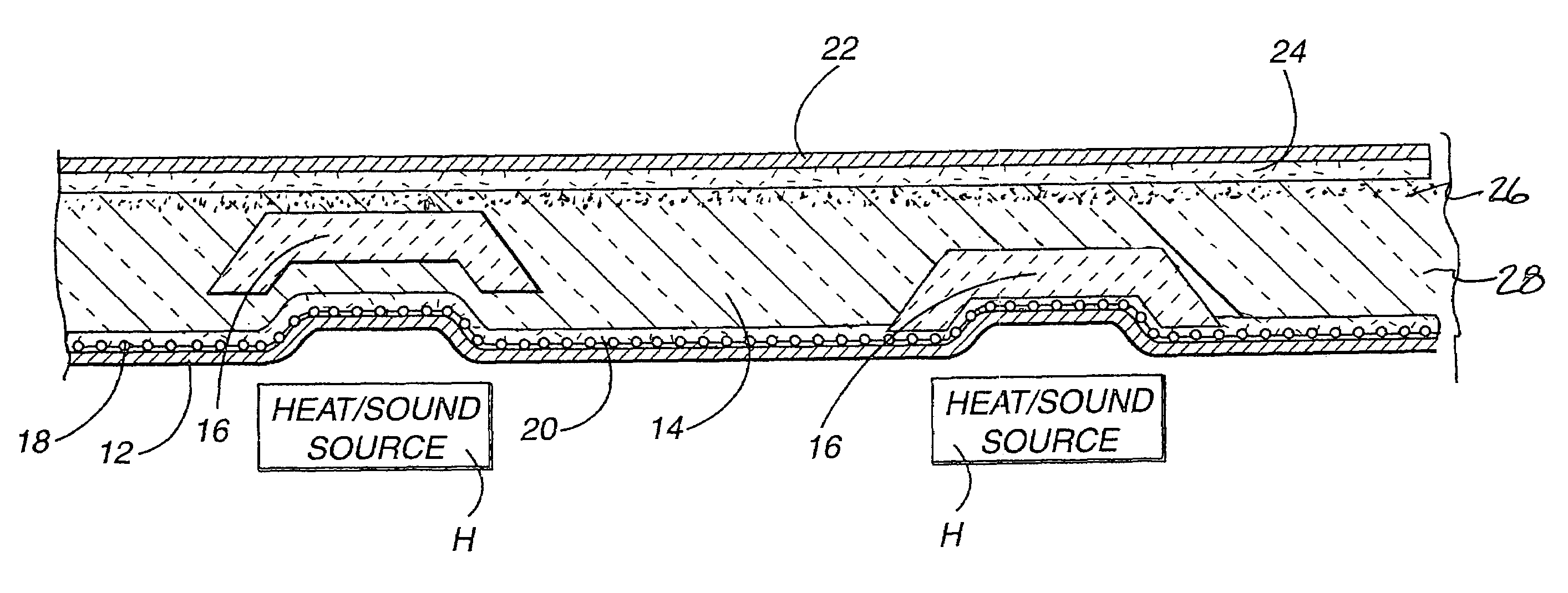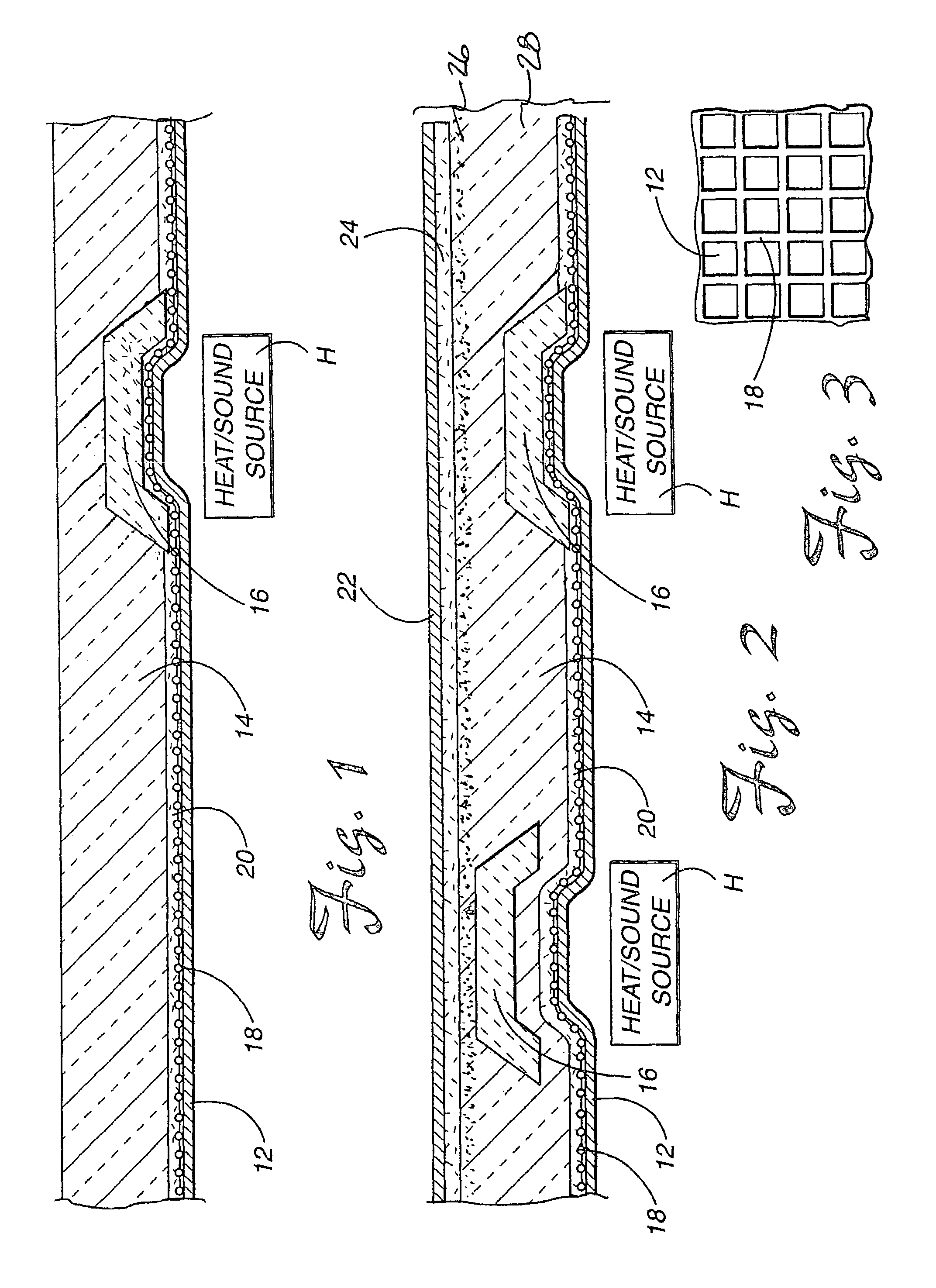Acoustical and thermal insulator
a technology of applied in the direction of roofs, instruments, pedestrian/occupant safety arrangements, etc., can solve the problems of reducing the cooling efficiency of the surrounding mechanical components, limiting the selection of construction materials, and not providing the best acoustical insulation, etc., to achieve improved acoustical and thermal insulation, strong thermal and acoustical insulation properties, and reduced melting points
- Summary
- Abstract
- Description
- Claims
- Application Information
AI Technical Summary
Benefits of technology
Problems solved by technology
Method used
Image
Examples
first embodiment
[0021]Reference is now made to FIG. 1 showing the acoustical and thermal insulator 10 of the present invention. The insulator 10 comprises a multilayer composite including a first facing layer such as a heat reflective layer 12, a polymer based blanket layer 14 and an insulation insert 16 that is encapsulated by the heat reflective layer and the polymer based blanket layer.
[0022]The first facing layer 12 may be made from polyester, polypropylene, rayon, nylon, glass and any combination thereof. In applications requiring superior heat insulative characteristics, the facing layer 12 may be formed from a heat reflective material such as a metallic foil (eg. aluminum or other heat reflective metal). Where a metallic foil is used foil thickness is generally in the range of 0.5–5.0 mil. In most applications, a foil thickness of between substantially 0.5–2.0 mil (e.g. 1.0 mil) is used. The thickness selected is based upon the temperature, durability and structural requirements of the parti...
second embodiment
[0029]the present invention is shown in FIG. 2. Like the first embodiment shown in FIG. 1, this embodiment of the thermal insulator 10 includes a first facing layer 12, a polymer based blanket layer 14 and an insulation insert 16 of the type previously described. The first facing layer 12 is attached to the polymer based blanket layer 14 by an appropriate adhesive 20 of the type described. Additionally, this embodiment includes a second facing layer 22.
[0030]Second facing layer 22 provides a smooth durable surface for mounting the insulator 10 against a vehicle component such as a fire wall, fender well, drive shaft tunnel or passenger compartment floor pan. A number of readily available materials may be utilized to construct the second facing 22. Such materials include polyester, polypropylene, rayon, nylon, glass, metal foil and any combinations thereof (eg. polyester and rayon). Both the first and second facing layers 12, 22 may also be treated to provide enhancement of desirable...
PUM
| Property | Measurement | Unit |
|---|---|---|
| Thickness | aaaaa | aaaaa |
| Density | aaaaa | aaaaa |
| Metallic bond | aaaaa | aaaaa |
Abstract
Description
Claims
Application Information
 Login to View More
Login to View More - R&D
- Intellectual Property
- Life Sciences
- Materials
- Tech Scout
- Unparalleled Data Quality
- Higher Quality Content
- 60% Fewer Hallucinations
Browse by: Latest US Patents, China's latest patents, Technical Efficacy Thesaurus, Application Domain, Technology Topic, Popular Technical Reports.
© 2025 PatSnap. All rights reserved.Legal|Privacy policy|Modern Slavery Act Transparency Statement|Sitemap|About US| Contact US: help@patsnap.com


